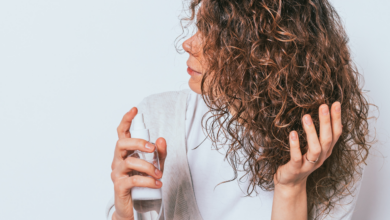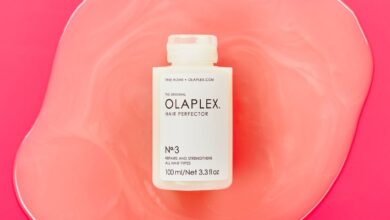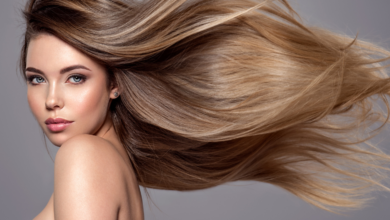
Step up your hair game with temporary tints! Whether you want to experiment with a bold new color or simply add some fun highlights, semi-permanent and wash-out colors offer a playful and low-commitment option for changing up your look. From vibrant pinks and blues to subtle pastels, temporary tints allow you to express your creativity and switch up your style without the long-term commitment. So, why not give your locks a temporary makeover and embrace a fresh and exciting new look?
Benefits of Temporary Tints
Quick and Easy Application
One of the major benefits of temporary tints is the quick and easy application process. Unlike traditional permanent hair dyes that require mixing and precise application, temporary tints can be applied at home without any hassle. Whether you’re using semi-permanent hair dyes or wash-out hair colors, the application is simple and straightforward.
With temporary tints, you don’t need to worry about scheduling an appointment at a salon or spending hours in front of a mirror trying to achieve the desired look. You can easily apply the tint yourself, saving time and money.
Low Commitment
Another advantage of temporary tints is the low commitment they offer. If you’re someone who loves experimenting with different hair colors but doesn’t want to make a long-term commitment, temporary tints are the perfect solution. Unlike permanent hair dyes, which can last for weeks or even months, temporary tints fade away over time.
Temporary tints allow you to change your hair color without the fear of making a permanent change. If you try a shade and it doesn’t suit you as expected, you can simply wait for it to fade away or try a different color. This flexibility gives you the freedom to express your creativity and change your look whenever you want.
Safe for Hair Health
One important consideration when dyeing hair is the potential damage it can cause. Traditional permanent hair dyes often contain harsh chemicals that can strip the hair of its natural oils and leave it dry and brittle. This is where temporary tints come to the rescue.
Temporary tints, especially semi-permanent hair dyes, are generally milder and more gentle on the hair. They do not contain high levels of peroxide or ammonia, which can be damaging to the hair. Temporary tints are a safer alternative for those who want to experiment with different hair colors without compromising the health of their hair.
Types of Temporary Tints
Semi-Permanent Hair Dyes
Semi-permanent hair dyes are a popular choice for those looking to temporarily change their hair color. These dyes typically last for around 4 to 6 weeks before gradually fading away. Semi-permanent hair dyes penetrate the hair shaft and stain the hair, resulting in a more long-lasting color compared to other temporary options.
One of the key characteristics of semi-permanent hair dyes is that they do not contain harsh chemicals like ammonia or peroxide. This makes them gentler on the hair and less damaging. Moreover, semi-permanent hair dyes come in a wide range of vibrant and unique colors, allowing you to create bold and eye-catching looks.
Wash-Out Hair Colors
Wash-out hair colors are temporary tints that offer even more flexibility and convenience. As the name suggests, these colors can be easily washed out with regular shampooing. Wash-out hair colors usually last for a couple of washes, making them perfect for those who want to experiment with different shades without the commitment.
These tints come in various forms such as sprays, gels, or mousses, making them easy to apply and distribute throughout the hair. Wash-out hair colors are a great option for special occasions or events when you want a temporary pop of color without the long-term commitment.
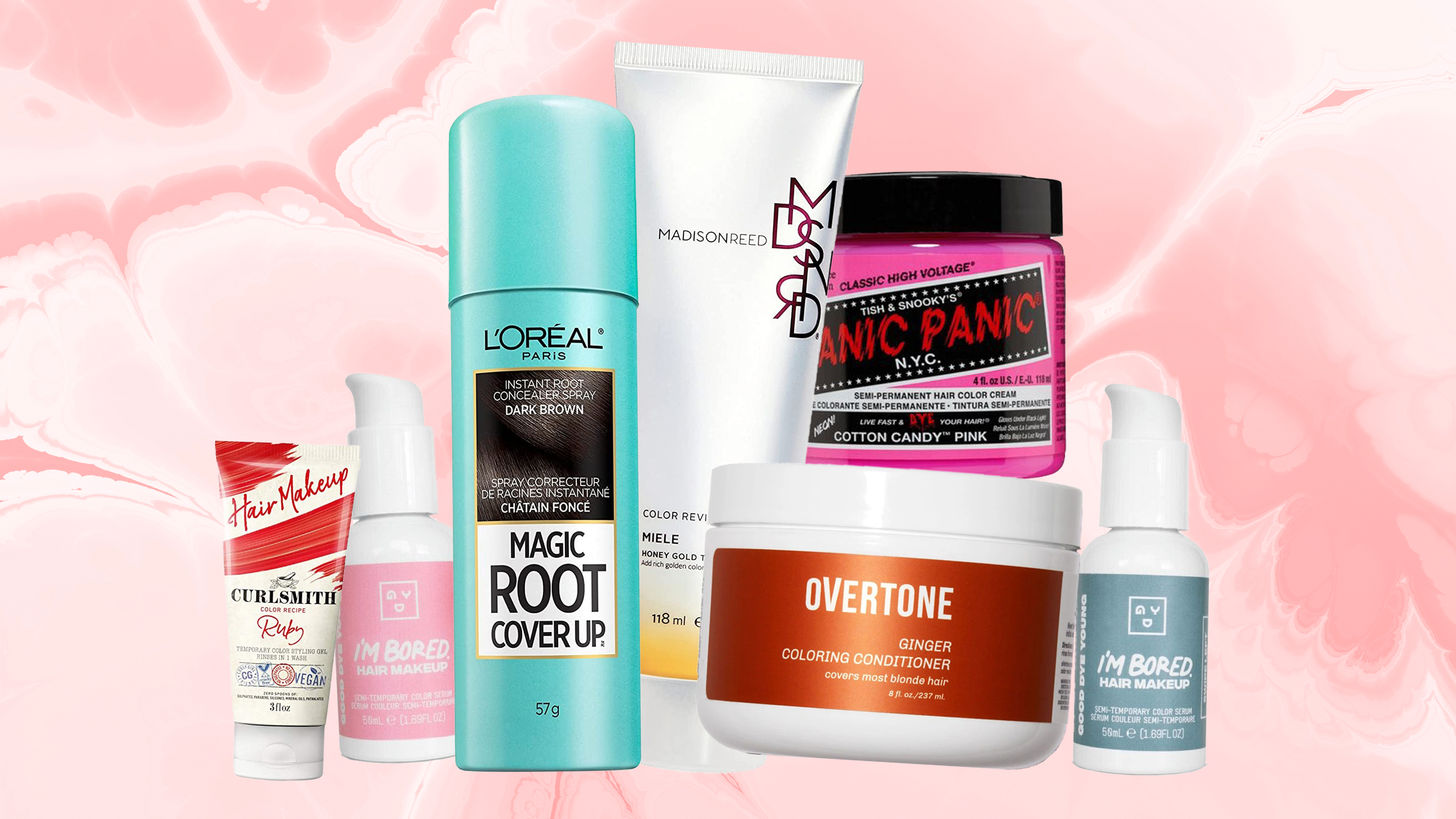
Semi-Permanent Hair Dyes
Definition and Characteristics
Semi-permanent hair dyes are hair colorants that partially penetrate the hair shaft to create a temporary change in color. Unlike permanent dyes, they do not alter the hair’s structure or melanin content. Instead, they coat the hair cuticle and deposit color molecules, resulting in a vibrant and long-lasting color.
One of the main characteristics of semi-permanent dyes is that they gradually fade over time with each wash. This fading allows for a softer transition between the original hair color and the temporary tint. Additionally, semi-permanent hair dyes are often free of harsh chemicals such as ammonia and bleach, making them a safer option for those concerned about hair health.
Duration and Fading
The duration of a semi-permanent hair dye depends on several factors, including the hair’s porosity, the shade of the dye, and how frequently the hair is washed. On average, semi-permanent dyes last around 4 to 6 weeks. However, it’s important to note that lighter shades may fade faster than darker ones.
The fading process of a semi-permanent hair dye is gradual and tends to result in a softer, more natural-looking color. As the dye molecules gradually wash out of the hair cuticle, the initial shade may evolve into a lighter or more pastel version of the original color. This allows for easy transition and experimentation with different looks.
Color Range
One of the major advantages of semi-permanent hair dyes is the vast range of colors available. From vibrant neons to subtle pastels, semi-permanent dyes cater to a wide spectrum of shades. Whether you’re looking to go bold and daring or prefer a more subtle change, there is definitely a semi-permanent hair dye to suit your preferences.
The color range of semi-permanent dyes is constantly expanding, with brands introducing new shades to keep up with the latest hair color trends. This allows you to stay on top of the latest fashion and create unique and personalized looks that reflect your style and personality.
Wash-Out Hair Colors
Definition and Characteristics
Wash-out hair colors, as the name suggests, are temporary tints that can be easily washed out with regular shampooing. These colors are typically available in the form of sprays, gels, or mousses, and offer a quick and convenient way to change your hair color for a short period of time.
One of the main characteristics of wash-out hair colors is their ability to provide instant color payoff. Whether you want to add streaks of vibrant hues or create a temporary ombre effect, wash-out hair colors allow for easy customization and experimentation. They are also ideal for those who want to achieve a bold and unique look for a special occasion or event.
Duration and Fading
The duration of wash-out hair colors can vary depending on the product and how frequently the hair is washed. Generally, these colors last for a few washes before gradually fading away. If you’re looking for a short-term change in hair color without any commitment, wash-out hair colors are the perfect option.
Unlike semi-permanent hair dyes, wash-out colors tend to fade more quickly and may require more frequent touch-ups to maintain the desired effect. However, this also provides more flexibility to switch between different shades and experiment with various color combinations.
Color Range
When it comes to wash-out hair colors, the color range is vast and diverse. From bold and vibrant shades to more natural tones, there is a wide selection available to suit every preference. Whether you want to try a temporary pink or blue hue or simply enhance your natural color with a subtle tint, wash-out options offer endless possibilities.
The color range of wash-out hair colors is constantly evolving, with new shades and formulations being introduced by various brands. This allows you to keep up with the latest trends and create unique looks that reflect your personal style.
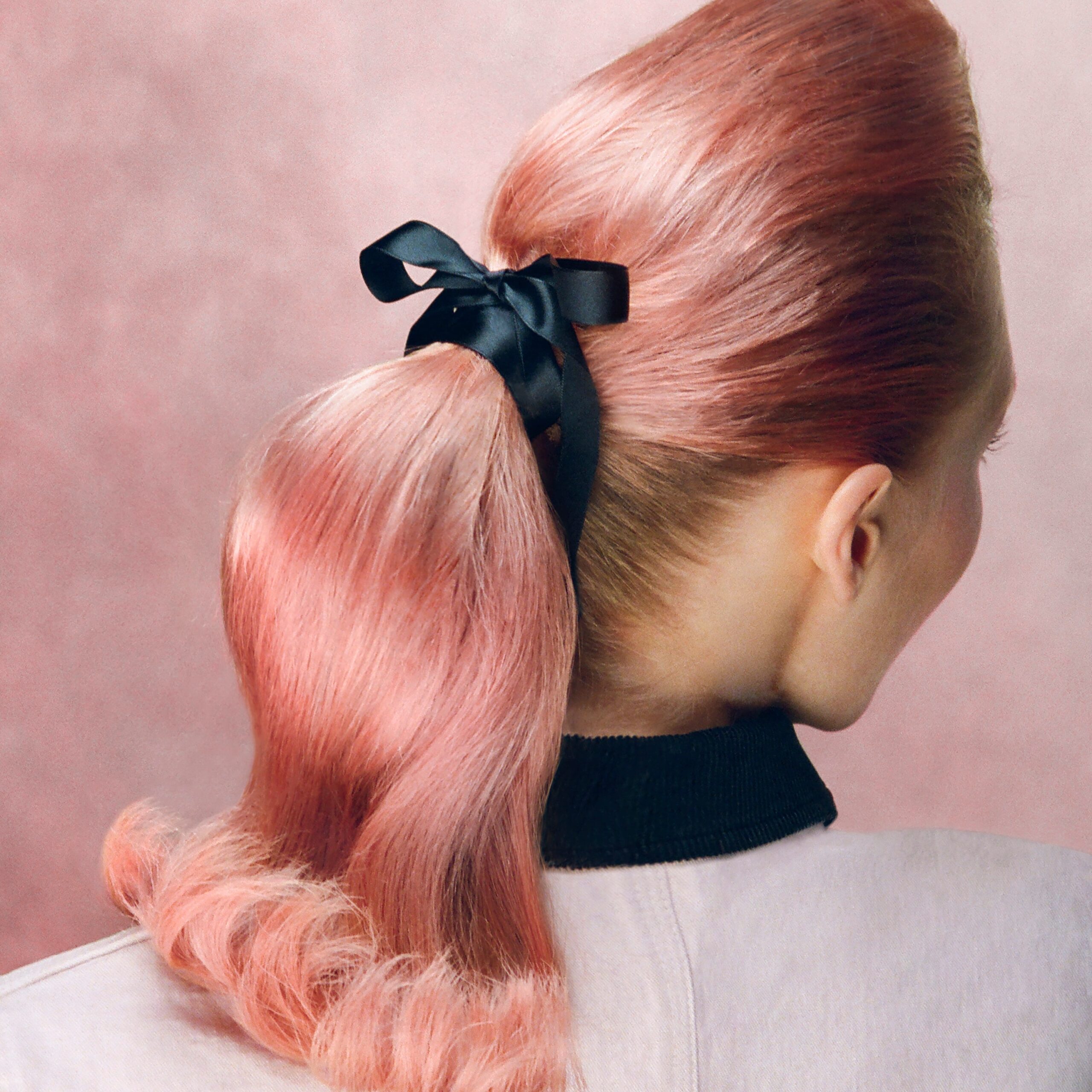
Preparation for Temporary Tints
Choosing the Right Shade
Before applying a temporary tint, it’s essential to choose the right shade that complements your skin tone and personal style. Consider the undertones of your skin and select a color that enhances your natural features. Cool-toned individuals may opt for shades like silver, ash, or violet, while warmer skin tones can go for golden, copper, or caramel hues.
It’s also important to consider your hair’s current color and condition when selecting a temporary tint. Some shades may require lightening or pre-lightening the hair to achieve the desired result. If you’re unsure about which shade to choose, consult a professional hairstylist for guidance.
Hair Porosity and Condition
Another factor to consider before applying a temporary tint is your hair’s porosity and condition. Porosity refers to the hair’s ability to absorb and retain moisture. Highly porous hair may absorb the tint more quickly and result in a more intense color payoff, while less porous hair may require more product for the desired effect.
It’s crucial to ensure that your hair is in good condition before applying any temporary tint. Deep conditioning treatments can help nourish and moisturize the hair, making it more receptive to the color. If your hair is damaged or weakened, it’s advisable to consult a professional to assess its suitability for temporary tints.
Patch Testing
Before applying any temporary tint to your entire head of hair, it’s important to perform a patch test. This involves applying a small amount of the product to a discreet area of the scalp or hair, typically behind the ear or on the nape of the neck. Leave the product on for the recommended time and observe for any adverse reactions or allergies.
Patch testing is crucial to ensure that you are not allergic to any ingredients in the tint. It also allows you to assess the final color result on a small section of hair before committing to the entire application. If you experience any discomfort or adverse reactions during the patch test, refrain from using the tint and consult a professional.
Application Techniques
Brush or Comb Application
One of the most common application techniques for temporary tints is the use of a brush or comb. This method allows for precise color application, especially when targeting specific sections of hair or creating intricate designs.
To apply the tint using a brush or comb, start by sectioning the hair and applying the color evenly from roots to ends. Use a brush or comb with narrow teeth for better control and distribution of the product. Work through the hair in small sections, ensuring that the color is evenly applied.
This application technique is ideal for those who want to achieve more intricate and detailed results, such as streaks, highlights, or ombre effects.
Spray Application
Spray application is another popular technique for applying temporary tints, especially for wash-out hair colors. This method allows for quick and easy color distribution, making it ideal for those who want a more spontaneous and hassle-free approach.
To apply the tint using a spray, section the hair and hold the canister a few inches away from the targeted area. Spray a light mist of color onto the hair, making sure to cover the desired sections. For a more vibrant result, layer the color by spraying additional coats. Once applied, allow the color to dry before touching or styling the hair.
Spray application is great for adding temporary pops of color or achieving an all-over tint. It’s important to protect clothing and surfaces from potential color transfer by placing a towel or cape around the shoulders and covering nearby areas.
Dip-Dye Method
The dip-dye method involves applying the tint to the ends of the hair, creating a gradient effect from the roots to the tips. This technique is popular for achieving a unique and eye-catching ombre or two-tone look.
To dip-dye the hair, prepare the tint according to the product instructions. Section the hair and secure the upper portion with clips. Dip the ends of the hair into the prepared tint, ensuring that the desired section is fully submerged. Allow the hair to soak for the recommended time and then rinse thoroughly.
The dip-dye method offers a more dramatic and edgy result, allowing you to experiment with contrasting colors or create a bold color statement.
Streaking or Ombre Effect
If you want to add temporary streaks or create an ombre effect, there are several techniques you can use. One option is to apply the tint using a small brush or sponge, focusing on specific sections of hair. This allows for precise placement and control over the color intensity.
To create a streaking effect, section the hair and apply the tint to the desired strands. Use a brush or sponge to distribute the color evenly and blend it seamlessly with the surrounding hair. For an ombre effect, apply the tint to the lower portions of the hair, gradually increasing the amount of product as you move towards the ends.
Streaking and ombre techniques offer a fun and playful way to incorporate temporary colors into your hairstyle. They allow for customization and personalization, letting you showcase your creativity and style.

Tips for Maximizing Color Vibrancy
Prepping and Priming the Hair
To ensure maximum color vibrancy and longevity, it’s important to properly prepare and prime the hair before applying any temporary tint. Start by washing the hair with a clarifying shampoo to remove any product buildup or residues. This helps create a clean and optimal canvas for the color to adhere to.
After washing, deep condition the hair to moisturize and nourish it. This step helps lock in moisture and prevent the color from drying out the hair. Use a hydrating conditioner or hair mask and leave it on for the recommended time to replenish the hair’s moisture levels.
Increasing Processing Time
If you’re aiming for a more intense or vibrant color result, you can increase the processing time of the temporary tint. Follow the product instructions for the recommended processing time, but consider leaving the tint on for an additional few minutes to maximize color payoff.
However, it’s important to note that leaving the tint on for too long may result in over-saturation or potential damage to the hair. Always monitor the processing time and perform regular checks to ensure the desired level of color intensity is achieved without compromising the hair’s health.
Proper Aftercare
To maintain the vibrancy and longevity of a temporary tint, proper aftercare is essential. Avoid washing the hair too frequently, as this can cause the color to fade more quickly. Instead, opt for dry shampoos or co-washing to refresh the hair between washes.
When washing the hair, use sulfate-free and color-safe shampoos and conditioners to prevent color stripping. Avoid hot water, as it can open the hair cuticles and allow the color to wash out more easily. Instead, opt for cool or lukewarm water to rinse the hair.
Protecting the hair from sunlight and excessive heat is also important for maintaining the color. UV rays and heat styling tools can cause the color to fade and the hair to become dry and damaged. Apply a leave-in conditioner with UV protection and use heat protectant products before styling with heat.
Temporary Tints for Dark Hair
Bleaching and Pre-Lightening
When it comes to temporary tints for dark hair, achieving vibrant and noticeable colors may require pre-lightening or bleaching. Since dark hair has more melanin, it can be more challenging for temporary tints to show up prominently without lightening the hair first.
Bleaching or pre-lightening the hair involves removing the natural pigments to create a lighter base for the temporary tint. This process lifts the hair’s color and allows the temporary tint to appear more visibly. It’s important to note that bleaching or pre-lightening can be damaging to the hair, so it’s advisable to seek professional assistance to minimize the risk of hair damage.
Color Choices and Suitability
When choosing temporary tints for dark hair, it’s important to consider the color choices and their suitability. Some shades may work better on dark hair than others, depending on the underlying pigments and tones. Bright and vibrant colors like red, purple, or blue tend to show up more prominently on dark hair, creating a striking contrast.
However, subtler shades like pastels or lighter colors may require a lighter base to achieve the desired effect. While temporary tints can provide a temporary change in color, the shades may appear more muted or may not show up as vividly on dark hair without pre-lightening.
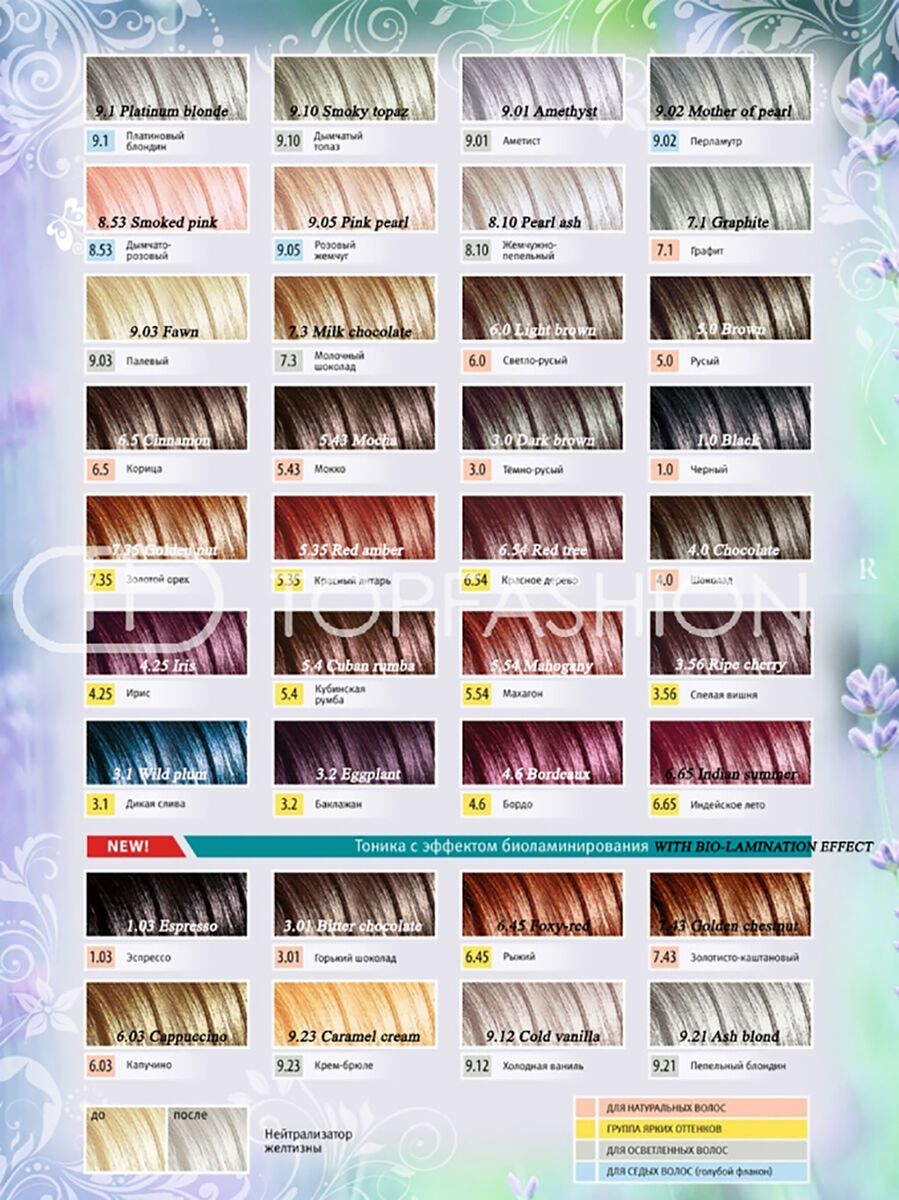
Removing Temporary Tints
Clarifying Shampoos
When it’s time to remove a temporary tint, clarifying shampoos can be effective in gently fading the color. Clarifying shampoos are designed to remove product buildup, oils, and impurities from the hair, making them an ideal choice for stripping away temporary tints.
To remove the tint using a clarifying shampoo, wet the hair thoroughly and apply the shampoo. Massage the product into the hair, focusing on the areas with the tint. Rinse thoroughly and repeat if necessary. It’s important to note that clarifying shampoos can be drying, so it’s advisable to follow up with a hydrating conditioner or hair mask.
Color Remover Products
If a clarifying shampoo doesn’t fully remove the temporary tint, color remover products can be a more effective option. These products are specifically formulated to remove artificial color from the hair without causing excessive damage.
To use a color remover, follow the instructions provided with the product. Typically, the hair is first saturated with the color remover, which breaks down the tint molecules. After allowing the product to process, rinse the hair thoroughly and follow up with a deep conditioning treatment.
Color remover products are generally more effective at removing temporary tints, but it’s important to carefully follow the instructions and perform a patch test to ensure compatibility with your hair.
Natural Remedies
For those who prefer more natural approaches, there are some home remedies that may help fade temporary tints. One option is to create a mixture of equal parts baking soda and anti-dandruff shampoo. Apply this mixture to the hair, focusing on the tinted areas, and leave it on for a few minutes before rinsing thoroughly.
Additionally, applying a mixture of equal parts lemon juice and conditioner to the hair can also help fade the tint. The citric acid in lemon juice acts as a natural lightening agent, gradually fading the color over time. However, it’s important to note that these natural remedies may take multiple applications to achieve the desired result.
Caring for Hair After Temporary Tints
Hydration and Moisture
After removing a temporary tint, it’s essential to prioritize hydration and moisture to restore the hair’s health and vitality. Temporary tints, especially those that require pre-lightening, can be drying to the hair. Therefore, it’s important to replenish moisture and nourishment through deep conditioning treatments.
Invest in a good quality hydrating conditioner or hair mask and use it regularly to keep the hair moisturized. Look for products that contain ingredients like argan oil, shea butter, or coconut oil to provide intense hydration and restore the hair’s natural shine.
Avoiding Heat Styling
To prevent further damage and color fading, it’s advisable to avoid excessive heat styling after removing a temporary tint. Heat can strip the hair of moisture and cause the color to fade more quickly. Give your hair a break from heat styling tools like flat irons or curling wands and allow it to air dry whenever possible.
If heat styling is necessary, always use a heat protectant spray or serum to minimize damage. Keep the heat setting on low or medium and avoid prolonged exposure to high heat. These precautions will help maintain the health of the hair and prevent unnecessary color fading.
Regular Trimming
To keep your hair in optimal condition after using temporary tints, regular trims are essential. Trimming the hair every 6-8 weeks helps remove split ends and prevents further damage from traveling up the hair shaft.
Regular trims also promote healthy hair growth and maintain the appearance of the color. By removing any damaged or split ends, the hair looks and feels healthier, allowing the temporary tint to shine through more vibrantly.
By following these tips and techniques, you can confidently explore the world of temporary tints and enjoy the fun and versatility they provide. Whether you’re looking to try out a bold new shade or simply add a touch of color to your style, temporary tints offer a low-commitment option that allows you to express your creativity and transform your look effortlessly. So go ahead, embrace the temporary and have fun experimenting with semi-permanent and wash-out colors!
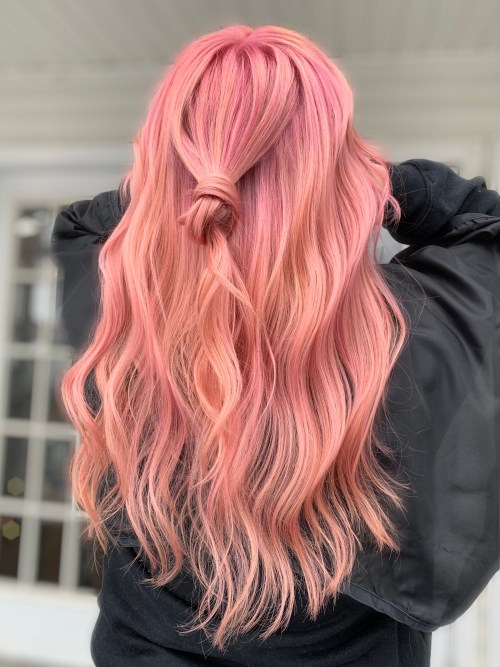
Garnier Men Shampoo Color 3.0 Black Brown Review(Opens in a new browser tab)
Moisturizing and Subtly-Tinted: The Power of Tinted Lip Balms(Opens in a new browser tab)
Maybelline New York Fit Me Fresh Tint Foundation SPF 50 Review(Opens in a new browser tab)

